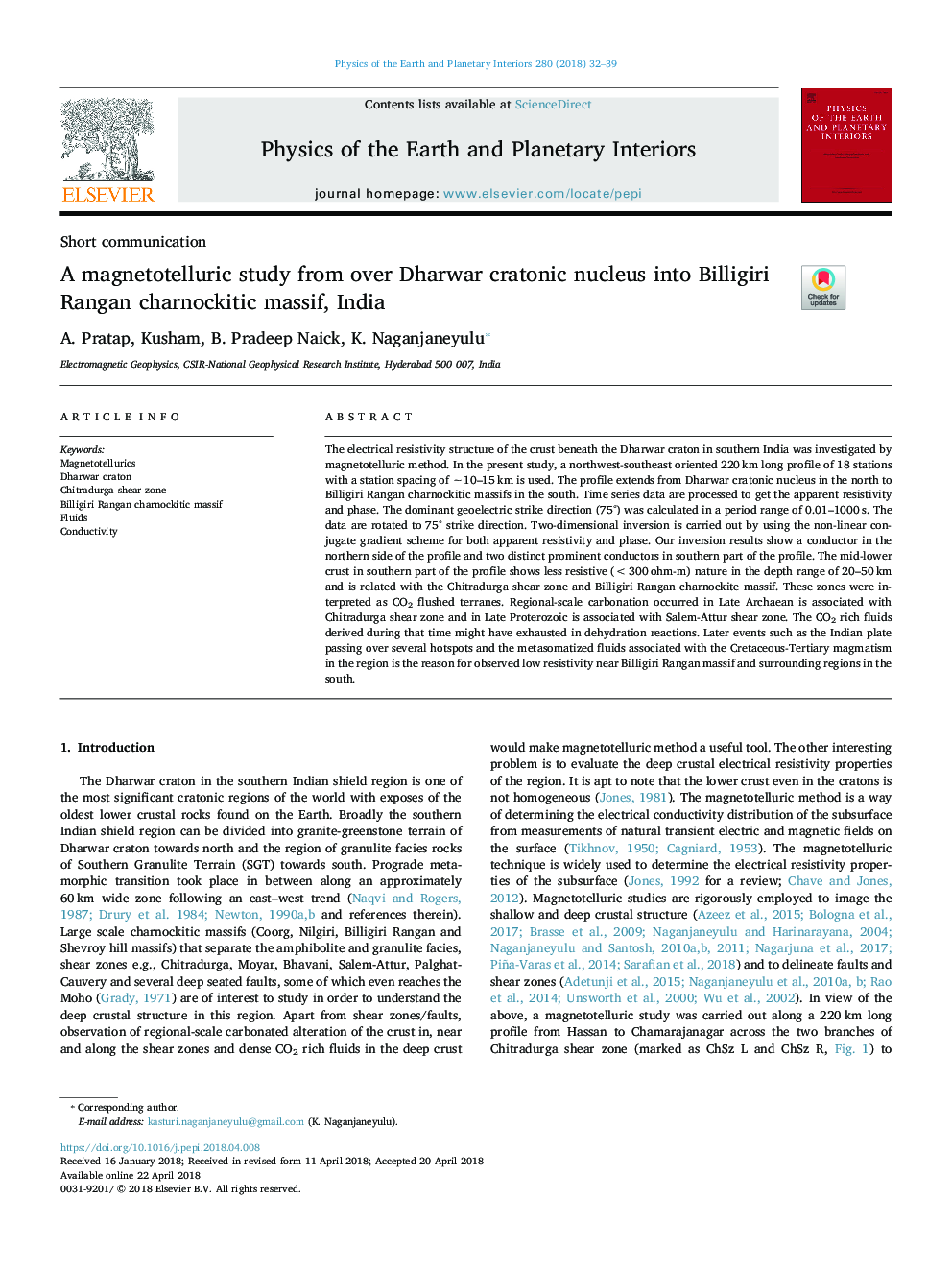| Article ID | Journal | Published Year | Pages | File Type |
|---|---|---|---|---|
| 8915684 | Physics of the Earth and Planetary Interiors | 2018 | 8 Pages |
Abstract
The electrical resistivity structure of the crust beneath the Dharwar craton in southern India was investigated by magnetotelluric method. In the present study, a northwest-southeast oriented 220â¯km long profile of 18 stations with a station spacing of â¼10-15â¯km is used. The profile extends from Dharwar cratonic nucleus in the north to Billigiri Rangan charnockitic massifs in the south. Time series data are processed to get the apparent resistivity and phase. The dominant geoelectric strike direction (75°) was calculated in a period range of 0.01-1000â¯s. The data are rotated to 75° strike direction. Two-dimensional inversion is carried out by using the non-linear conjugate gradient scheme for both apparent resistivity and phase. Our inversion results show a conductor in the northern side of the profile and two distinct prominent conductors in southern part of the profile. The mid-lower crust in southern part of the profile shows less resistive (<300â¯ohm-m) nature in the depth range of 20-50â¯km and is related with the Chitradurga shear zone and Billigiri Rangan charnockite massif. These zones were interpreted as CO2 flushed terranes. Regional-scale carbonation occurred in Late Archaean is associated with Chitradurga shear zone and in Late Proterozoic is associated with Salem-Attur shear zone. The CO2 rich fluids derived during that time might have exhausted in dehydration reactions. Later events such as the Indian plate passing over several hotspots and the metasomatized fluids associated with the Cretaceous-Tertiary magmatism in the region is the reason for observed low resistivity near Billigiri Rangan massif and surrounding regions in the south.
Related Topics
Physical Sciences and Engineering
Earth and Planetary Sciences
Geophysics
Authors
A. Pratap, Kusham Kusham, B. Pradeep Naick, K. Naganjaneyulu,
